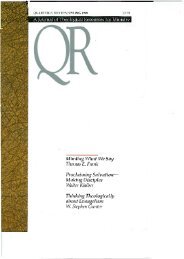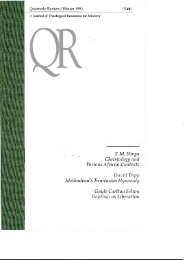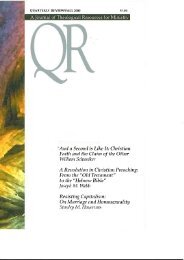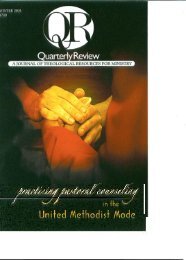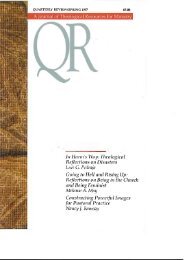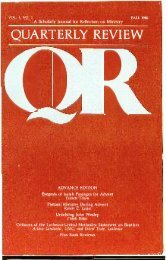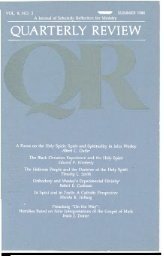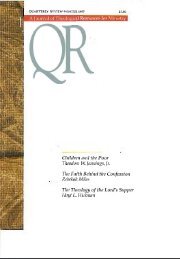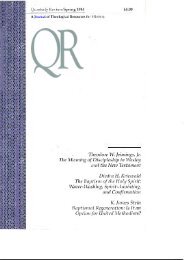Winter 1984 - 1985 - Quarterly Review
Winter 1984 - 1985 - Quarterly Review
Winter 1984 - 1985 - Quarterly Review
Create successful ePaper yourself
Turn your PDF publications into a flip-book with our unique Google optimized e-Paper software.
QUARTERLY REVIEW, WINTER <strong>1984</strong><br />
achievements. This concept of a "failed" but true messiah is found in a<br />
rabbinic tradition of the Messiah ben Joseph. The Messiah ben David<br />
(son of David) is the one who brings the final restoration. In the<br />
Messiah ben Joseph idea, you have a messiah who comes and fails,<br />
indeed is put to death, but this messiah paves the way for the final<br />
redemption.<br />
In fact, Christians also sensed that Jesus did not exhaust the<br />
achievements of the final messiah. Despite Christian claims that Jesus<br />
was a total success (the proof being that redemption has been<br />
achieved; it is of the otherworldly kind) even Christians spoke of a<br />
Second Coming. The concept of Second Coming, in a way, is a tacit<br />
admission that if at first you don't succeed, try, try again.<br />
One might argue then that both sides claimed—and denied—more<br />
than was necessary in order to protect their own truth against the<br />
counterclaims of the other. Both sides were too close to recognize each<br />
other, and too close and too conflicted to come to grips with each<br />
other's existence as valid in its own right. Both faiths stepped out of<br />
history to protect their own position—Christians denying anything<br />
revelatory further can happen in history because Christ is the final<br />
revelation; Jews denying any further revelation in history because<br />
Judaism is a covenant that cannot be revoked.<br />
There was even more theological fallout to these moves. Religion<br />
tended to abandon the world to Caesar or to mammon. Religion all too<br />
often ended up as an opiate of the masses, i.e., promising people<br />
fulfillment in the great by-and-by if they accept suffering and the<br />
world as it is. In a way, each group was defining the sacred out of<br />
history into another realm.<br />
Placing the sacred beyond history protected faith from refutation<br />
and disappointment but the cost was high. It is not surprising then<br />
that each faith tended to generate movements from time to time that<br />
sought to redress the balance or that sought to bring the "missing"<br />
part of redemption into being. What was defined as "missing" grew<br />
out of the interaction of tradition, local culture, and the historical<br />
condition of the group. Since the concept of redemption can be<br />
pushed toward a spiritual realization or a worldly one, both religions<br />
developed parallel responses along a spectrum of positions within<br />
each faith. These developments further complicated the relations<br />
between the two faiths even as they ensured even greater overlap and<br />
parallelism between them.<br />
In retrospect, a key moment of division came in the differential<br />
response of the two groups to the destruction of the Second Temple.<br />
14



